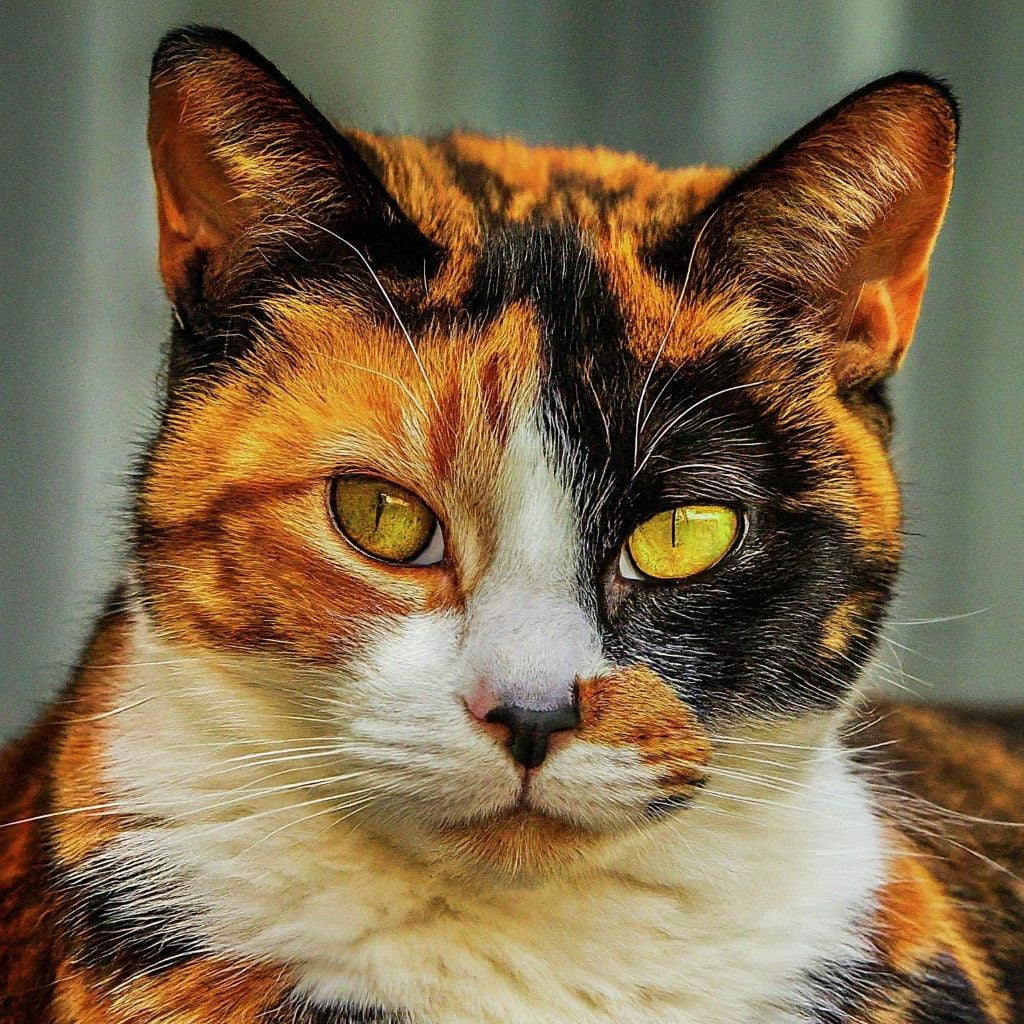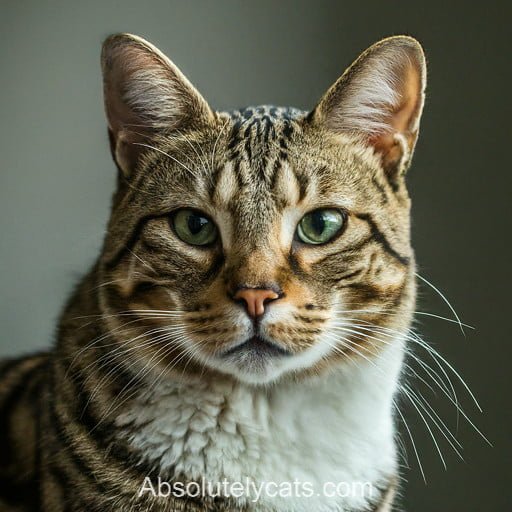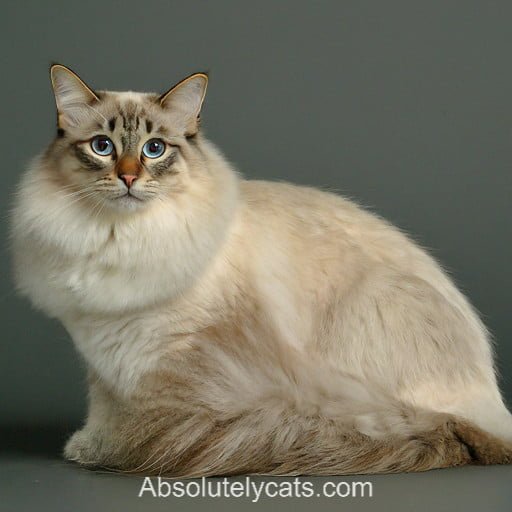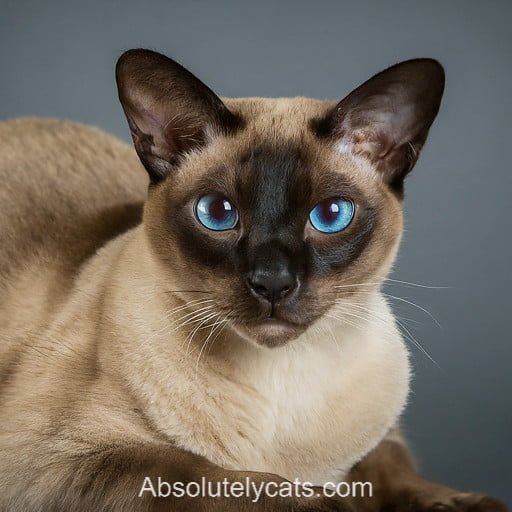
Calico cats are renowned for their striking and vibrant coats, which feature a combination of three distinct colors: white, black, and orange (or variations thereof). These felines are not considered a specific breed but rather a color pattern that can be found in various cat breeds. In this comprehensive article, we will explore the fascinating world of calico cats, including their characteristics, genetics, temperament, care requirements, and more.
Understanding the Calico Coat Pattern
Calico cats boast a patchwork-like coat pattern characterized by large splotches of white, interspersed with areas of black and orange. The distribution and intensity of these colors can vary widely among individual cats, resulting in unique and visually captivating appearances. Some calicos may also exhibit additional colors such as gray or cream, adding further complexity to their coat patterns.
Genetics of Calico Cats
The distinctive coat pattern of calico cats is the result of genetic factors, specifically the interaction of genes responsible for coat color and pattern. Calico cats are almost always female due to the genetics of coat color inheritance in cats. The gene responsible for orange coloration is carried on the X chromosome, and for a cat to display orange patches in its coat, it must inherit two X chromosomes (XX). Since male cats have only one X chromosome (XY), they typically do not exhibit the calico pattern.
Variations in Calico Coat Colors
While the classic calico pattern features patches of white, black, and orange, variations exist within the calico category. Some calico cats may have diluted colors, resulting in softer shades of gray, cream, or blue instead of black. Others may exhibit a predominantly white coat with smaller patches of color, known as “dilute calicos” or “caliby” (calico-tabby) cats. Each variation adds to the allure and diversity of calico cats.

Personality Traits of Calico Cats
Beyond their stunning appearance, calico cats are known for their unique personality traits. While individual temperaments can vary, calicos are often described as affectionate, independent, and energetic. They tend to form strong bonds with their human companions and enjoy interactive play. Calico cats are also known for their assertive and confident demeanor, making them charismatic and engaging pets.
Care and Maintenance of Calico Cats
Like all cats, calicos require proper care and maintenance to ensure their health and well-being. This includes regular grooming to keep their coats free of tangles and matting, as well as routine veterinary check-ups to monitor their overall health. Providing a balanced diet, engaging toys, and ample opportunities for exercise and mental stimulation are essential for keeping calico cats happy and healthy.
Health Considerations for Calico Cats
While calico cats are generally healthy animals, they may be prone to certain health issues commonly associated with their respective breeds. These may include dental problems, obesity, and genetic conditions such as hypertrophic cardiomyopathy (HCM) or polycystic kidney disease (PKD). Regular veterinary care and early detection of any health concerns are crucial for maintaining the well-being of calico cats.
Famous Calico Cats in Popular Culture
Calico cats have made their mark in popular culture, appearing in literature, films, and folklore around the world. One of the most famous fictional calico cats is “Duchess” from Disney’s “The Aristocats,” known for her elegance and charm. Additionally, calico cats have been featured in various works of art and literature, further cementing their status as beloved and iconic feline companions.

Adopting a Calico Cat
If you’re considering adding a calico cat to your family, adoption is a wonderful option. Many animal shelters and rescue organizations have calico cats available for adoption, offering loving companionship to prospective owners. By adopting a calico cat, you not only provide a forever home to a deserving animal but also enrich your life with the joy and companionship that these colorful felines bring.
Conclusion
In conclusion, calico cats are truly unique and captivating creatures with their distinctive coat patterns, vibrant personalities, and rich cultural significance. Whether as cherished pets or beloved characters in popular culture, calico cats continue to capture the hearts of cat lovers worldwide. By understanding their characteristics, genetics, and care requirements, we can appreciate and celebrate the beauty and charm of calico cats in all their colorful glory.
Related FAQ’S
Why are Calico Cats So Special?
Calico cats are considered special for several reasons. Firstly, they boast a striking and visually captivating coat pattern that sets them apart from other cats. Their patchwork-like appearance, featuring a combination of white, black, and orange (or variations thereof), makes them truly unique and eye-catching. Additionally, calico cats have an intriguing genetic makeup, with their coat pattern being the result of complex interactions between genes responsible for coat color and pattern.
Are All Calico Cats Female Only?
The overwhelming majority of calico cats are indeed female. This is due to the genetics of coat color inheritance in cats. The gene responsible for orange coloration is carried on the X chromosome, and for a cat to display orange patches in its coat, it must inherit two X chromosomes (XX). Since male cats have only one X chromosome (XY), they typically do not exhibit the calico pattern. However, rare instances of male calico cats can occur, usually as a result of genetic abnormalities such as XXY chromosome configurations.
How Rare is a Calico Cat?
Calico cats are relatively rare, especially when considering the classic combination of white, black, and orange colors. The probability of a cat inheriting the necessary combination of genes to produce the calico pattern is relatively low, making calico cats less common compared to cats with solid-colored coats or simpler coat patterns. However, the exact rarity of calico cats may vary depending on factors such as geographic location and breed prevalence.
Are Calico Cats Expensive?
The cost of calico cats can vary depending on various factors, including their breed, lineage, age, and where they are obtained from. In general, purebred calico cats from reputable breeders may command higher prices due to their desirable pedigree and lineage. Additionally, factors such as coat quality, temperament, and whether the cat has been spayed or neutered may also influence its price. However, calico cats available for adoption from animal shelters or rescue organizations may be more affordable and offer the opportunity to provide a loving home to a deserving animal.
Why are 99% of Calico Cats Female?
The overwhelming majority of calico cats are female due to the genetics of coat color inheritance in cats. As previously mentioned, the gene responsible for orange coloration is carried on the X chromosome. Female cats have two X chromosomes (XX), while male cats have one X and one Y chromosome (XY). To display the calico pattern, a cat must inherit two X chromosomes, resulting in a high proportion of calico cats being female.
What is the Rarest Color for a Cat?
The rarest color for a cat is subjective and can vary depending on factors such as geographic location, breed prevalence, and individual genetics. However, certain coat colors or patterns may be less common or more sought after than others. For example, cats with unusual or unique coat colors such as solid white, silver, or rare color combinations like chocolate or lilac may be considered rare by some cat enthusiasts.
Is Calico a Lucky Cat?
In many cultures, calico cats are indeed considered symbols of good luck and prosperity. This belief is particularly prevalent in Japan, where calico cats, known as “Maneki-neko” or beckoning cats, are believed to bring good fortune to their owners. The tri-color pattern of calico cats is thought to represent luck, with white symbolizing purity, black warding off evil spirits, and orange bringing wealth and prosperity.
Can Female Calico Cats Get Pregnant?
Yes, female calico cats can get pregnant like any other female cat, provided they are not spayed. Female cats typically reach sexual maturity at around 6 to 9 months of age, at which point they may go into heat and become receptive to mating. It is important for cat owners to consider the responsibility of breeding their cats and to ensure that proper care is taken to prevent unplanned litters.
Do Calico Males Exist?
While male calico cats are extremely rare, they do exist, albeit in small numbers. Male calico cats usually result from genetic anomalies such as XXY chromosome configurations, also known as Klinefelter syndrome. These cats are typically sterile and may exhibit health issues associated with their genetic makeup. Male calico cats are considered unusual and often attract attention due to their rarity.
Why Do Calico Cats Get Fat?
Calico cats, like cats of any other color or pattern, can become overweight or obese due to various factors. These factors may include overfeeding, lack of exercise, genetic predisposition, hormonal imbalances, or underlying health conditions. Additionally, calico cats, like other cats, may have individual differences in metabolism and appetite that can contribute to weight gain. It’s essential for cat owners to provide a balanced diet, monitor their cat’s food intake, and ensure they receive regular exercise to help prevent obesity and maintain a healthy weight.
Why Do Calico Cats Meow So Much?
Calico cats, like cats of any other color or breed, may meow for various reasons, including communication, attention-seeking, hunger, discomfort, or stress. Each cat has its unique personality and vocalization patterns, and some calico cats may be more vocal than others. Additionally, environmental factors, such as routine changes or other pets’ presence, may influence a cat’s vocal behavior. It’s essential for cat owners to pay attention to their cat’s vocalizations and behavior to understand their needs and provide appropriate care and attention.
Do Calico Cats Get Along With Dogs?
The relationship between a calico cat and a dog can vary depending on the individual personalities and temperaments of both animals, as well as their socialization and past experiences. In general, calico cats, like other cats, may exhibit a range of behaviors towards dogs, from curiosity and friendliness to fear or aggression. Likewise, dogs may respond differently to cats, depending on their breed, temperament, and socialization. Proper introduction and gradual acclimation are essential when introducing a calico cat to a dog or vice versa. With patience, positive reinforcement, and supervision, many calico cats can form harmonious relationships with dogs, becoming playful companions or even close friends.

Tammy is the passionate cat enthusiast behind Absolutely Cats. Her journey began with a childhood filled with furry companions, leading her to advocate for cat well-being and a connoisseur of all things feline. Tammy’s dedication to the world of cats is evident in every article, guide, and review she pens.






